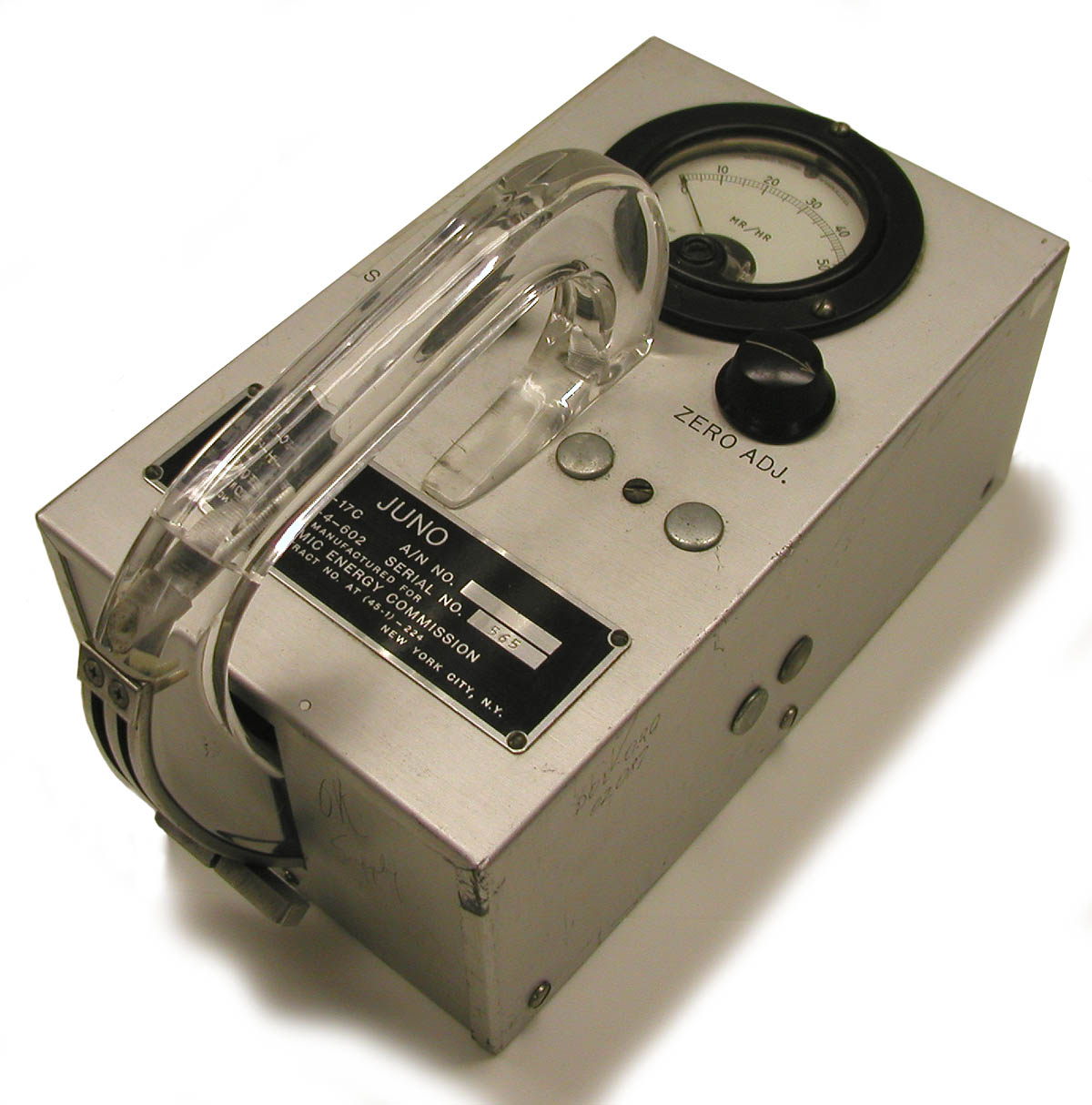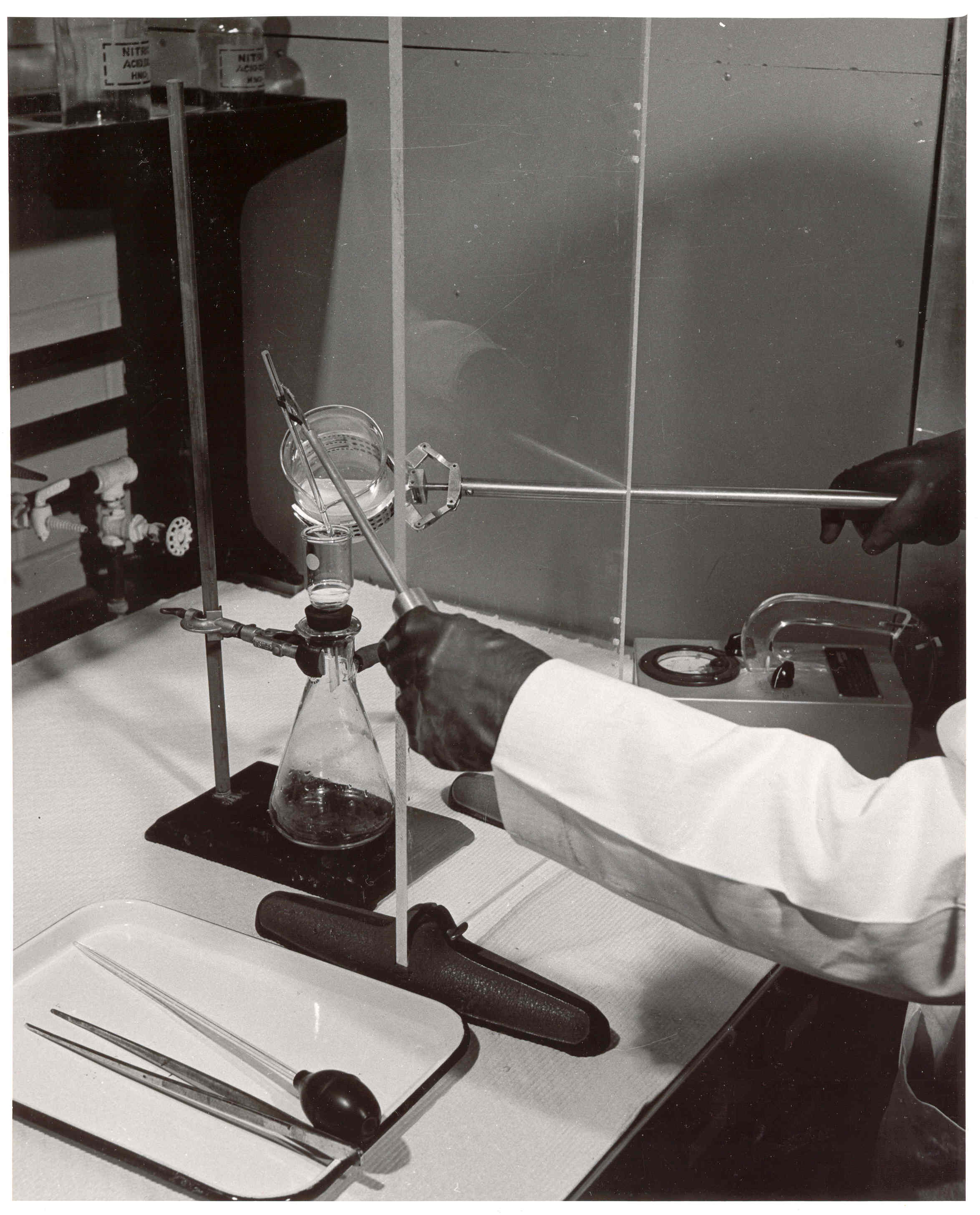Juno Ion Chambers (ca. 1950-1955)

The Juno was an extremely popular survey meter that saw use from the late 1940s until the late 1980s. It employed a filtered ion chamber to detect alpha, beta, and gamma radiation (although it would only be calibrated for alpha and gamma). Levers on the handle controlled the aluminum and acetate filters on the bottom of the unit that were used to screen out beta and alpha activity respectively.

This AEC photograph shows the Lucite-handled Juno in use.
Carl Gamertsfelder, the second person (after Ernie Wollan) to use the title “health physicist,” told me that he was involved in the development of the Juno while he was at Hanford, sometime around 1947 or 1948. It was intended to serve as a replacement for the Zeus which it closely resembled. The main difference was the improved electronics of the Juno.
The example in the photograph has a clear Lucite handle which means that it probably dates from 1950-1953. The Lucite handle, despite its good looks, was prone to cracking and was replaced by a metal handle in 1953 (Nucleonics, June 1953 p. 57). It is a Model H-4-602 manufactured for the Atomic Energy commission by the Espey Mfg. Co. Inc. of New York City, ca. 1950-1955.
Range: 0-50, 0-500 and 0-5000 mR/h
The example to the right, the Model HRJ-3 (High Range Juno), was manufactured by Technical Associates of Glendale California. For obvious reasons, it was sometimes called the red-faced Juno.

Range: 0-250, 0-2500 and 0-25,000 mR/h
Size: 9” x 5.5” x 3.75”
Weight: 4 lbs 8 oz.
Junos kindly donated by Ron Kathren and the Department of Energy (ORO) courtesy of J.J. Davis.
References
- Advertisements in Nucleonics August 1951, p102; Nucleonics October 1951, p 102; Nucleonics June 1953, p 97; Nucleonics August 1957, p 76; Nucleonics June 1953, p 97.
- Atomic Energy Commission Radiation Instrument Catalog, Catalog No. 2, Part 2, page date July 1, 1950; page SIC-17B and 17D.
- Davis , D.M., Gupton, E.D. and Hart, J.C. Applied Health Physics Radiation Survey Instrumentation, ORNL-332 (1st Rev.), January 1954, p. 72.
